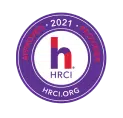Are you looking for a way to increase the efficiency of the hiring process? Maybe you are struggling to find consistency in the quality of hires lately. If so, a talent acquisition scorecard may be the perfect fit for your recruiting team!
What is a Talent Acquisition Scorecard?
A talent acquisition scorecard is also known as a candidate scorecard. The TA scorecard is a list of skills and qualifications that a candidate would need to be successful in a position. Hiring managers will usually have an idea of what traits are needed to successfully fill a role, but many managers still rely on their instincts.
Nearly 85% of hiring managers admit that they rely on gut feelings during the interview. The issue is that relying on instincts leads to inconsistency in the candidates that are hired. A bad hire can cost the company up to 30% of the hire’s gross salary!
The talent acquisition scorecard takes the guesswork out of the hiring process because all members of the team know what they are looking for in a candidate.
How Do Talent Acquisition Scorecards Work?
The talent acquisition scorecard software is best explained in four steps:
Step 1: Select the skills, traits, and qualifications that you are looking for in a candidate.
Step 2: Interviewers will take notes during the hiring process and create their own score.
Step 3: Compare interviewer notes and scores of each candidate during the selection process.
Step 4: Hire qualified candidates and repeat the process as needed.
This software encourages collaboration between interviewers while simultaneously using collected data to make hiring decisions. By creating a standardized talent acquisition scorecard template, you can repeatedly hire qualified and high-performing candidates consistently.
What is a Recruiting Scorecard?
If a company has experienced drastic improvement with using a candidate scorecard, it will often bring scorecards to other areas of the organization. One example is a balanced scorecard which is a strategic management metric that helps identify and improve internal operations to assist in external outcomes.
Similarly, a recruiting or recruiter scorecard tracks the individual performance of each recruiter. It uses similar metrics to the hiring dashboard, but the scorecard specifically focuses on individual and operational goals.
These scorecards measure performance by time, quality, and effectiveness and can be accessed weekly, monthly, or quarterly. They are used to identify success and where the recruiter can improve. Scorecards are great at showing which employees may need additional training or resources.
What Metrics are Included on the Recruiter Scorecard?
The most basic key performance indicators or KPIs that executive leadership will want to track are speed, cost, quality, and customer satisfaction. The size of your company will influence which recruiting scorecard metrics are used. The most common include:
Time to Fill
This measures the time from the posting of the job requisition to job acceptance. This metric is key to analyzing recruiter efficiency. Keep in mind that the longer a position is open, the longer productivity is impacted.
Hire Ratio
Also referred to as the interview-to-hire ratio, is the average number of candidates a hiring manager needs to interview to make an offer. The perfect ratio is 3:1. Meaning that three candidates were interviewed for a position and one of the three was hired. This metric is useful for understanding how much time the recruiter is spending on interviews per position they are hiring for.
Cost Per Hire
This is the average amount of money that was spent (cost) on one hire. All recruiters are under pressure to quickly find talent to fill their positions the most cost-effectively. Reducing the cost per hire can drastically impact the recruitment strategy because you will have more resources available to use on other recruiting outlets.
Offer Accept Rate
This refers to the number of offers that are accepted in a select period. For example, if a recruiter makes 10 offers a month, but only 4 people accept the offer then the offer acceptance rate is 40%. If the percentage is low it will identify where improvement can be made.
Quality of Hire
This metric ties into customer satisfaction because it measures how effective the recruiting process is at hiring productive employees. A quality hire is made evident by a high retention rate which leads to a low turnover rate per recruiting manager. Typically, this metric is analyzed at the 60 or 90-day mark but can be evaluated as early as 30 days.
TA Scorecards with Discovered
Discovered can help lead your company to success whether that is through an applicant tracking system or with candidate scorecards.
If you are looking to improve your talent acquisition process but aren’t sure where to start, book a demo today. To speak with a member of our customer support team, give us a call at (833) 332-8378.














